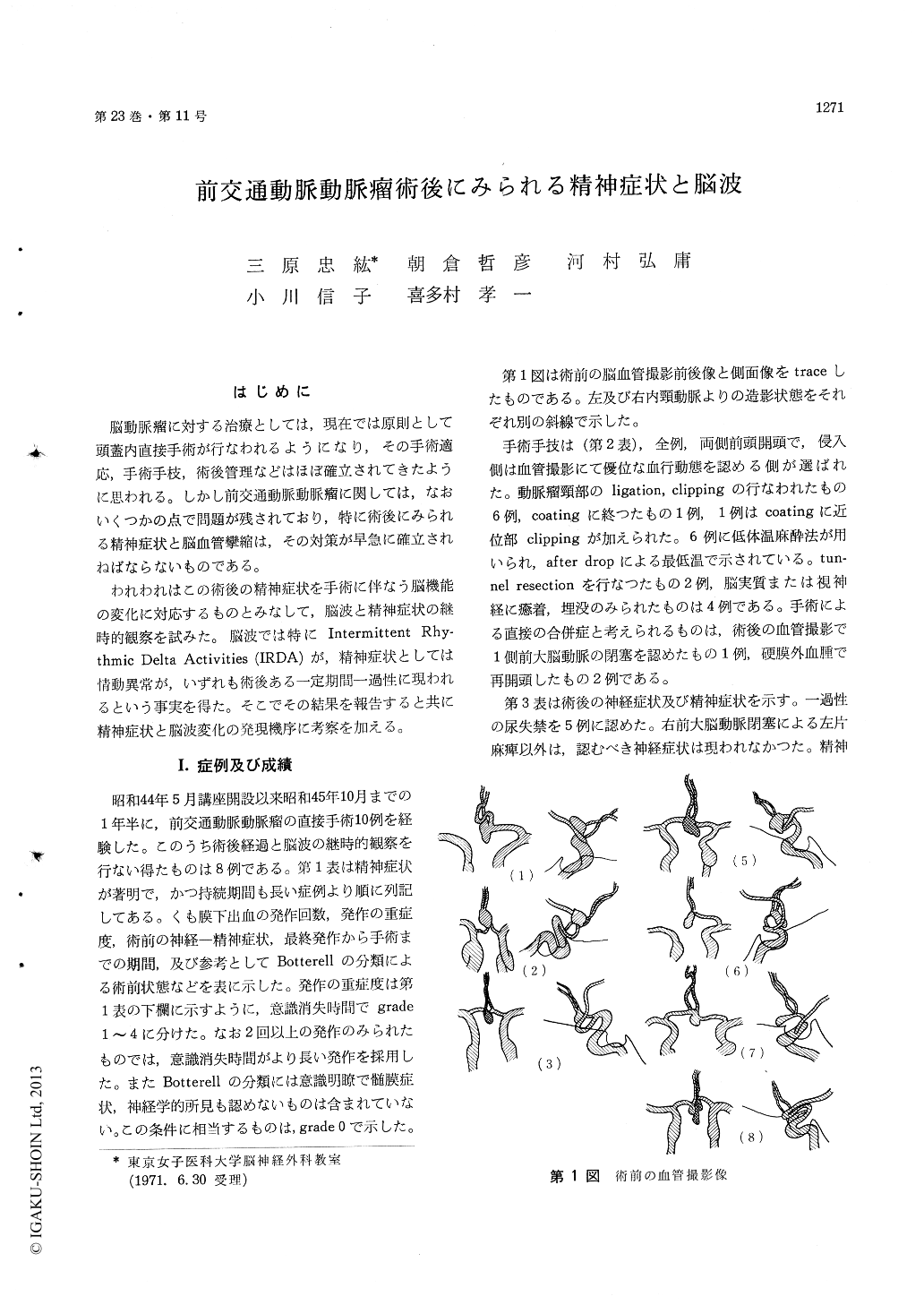Japanese
English
- 有料閲覧
- Abstract 文献概要
- 1ページ目 Look Inside
はじめに
脳動脈瘤に対する治療としては,現在では原則として頭蓋内直接手術が行なわれるようになり,その手術適応,手術手枝,術後管理などはほぼ確立されてきたように思われる。しかし前交通動脈動脈瘤に関しては,なおいくつかの点で問題が残されており,特に術後にみられる精神症状と脳血管攣縮は,その対策が早急に確立されねばならないものである。
われわれはこの術後の精神症状を手術に伴なう脳機能の変化に対応するものとみなして,脳波と精神症状の継時的観察を試みた。脳波では特にIntermittent Rhy—thmic Delta Activities (IRDA)が,精神症状としては情動異常が,いずれも術後ある一定期間一過性に現われるという事実を得た。そこでその結果を報告すると共に精神症状と脳波変化の発現機序に考察を加える。
It is a well-known fact that some mental symp-toms occur after the direct surgical attacks to the anterior communicating aneurysms.
There are several proposals of the hypothesis to interprete these symptoms from the standpoint of views, such a circulatory disturbance, local cerebral tissue damage or interruption of neural circuits concerning with the maintenance of normal mental activities.
The authors had observed longitudially mental symptoms and electroencephalographic changes in eight cases out of ten cases which were operated directly on the anrerior communicating aneurysms by means of ligation, clliping, wrapping and/or encasement.
From the results of our observation, it was seemed to be that mental symptoms were based on the amnestic syndrome involving confabulation, while visual hallucination, delusional ideas could be de-prived secondarily from the emotional disturbances which lasted for a certain period after the surgery.
Intermittent rhythmic delta activities (IRDA) of EEG were between postoperative 1st week and 1st month.
In our observation, it was confirmed that both the mental symptoms and the EEG changes appear-ed coincidently and improved also concomitantly in the postoperative courve.
Under such circumstances, it was remarkable that emotional disorder such as psychomotor irrit-ability or lack of sponraneity had appeared co-incidently with the appearance of IRDA.
From these observations, the authors have sup-posed that damages whether produced by surgical procedure or due to spontaneous rupture, brain tissue surrounding the anterior communicating aneurysm could yield degenerative processes on the composing structures of the limbic system and such functional delineation should be responsible for the reversible appearance of mental and/or emotional disturbances after the direct surgical attack.
Even under such situations, it must be unforgot-ten that the activity of ascending reticular system and the interference of hemodynamics in the areas supplyed by anterior cerebral artery might play importance roles in the appearance of mental symptoms and EEG changes.

Copyright © 1971, Igaku-Shoin Ltd. All rights reserved.


